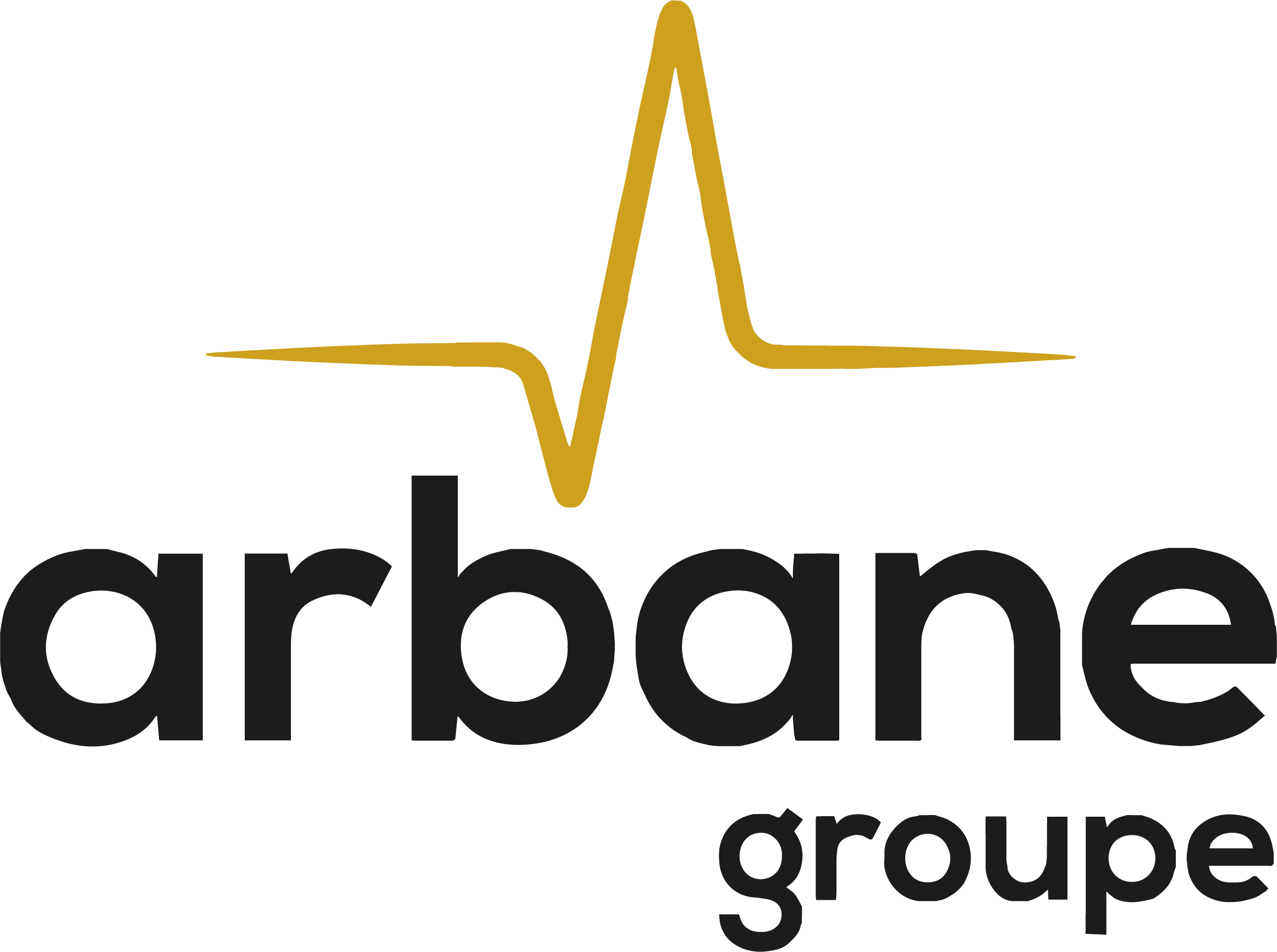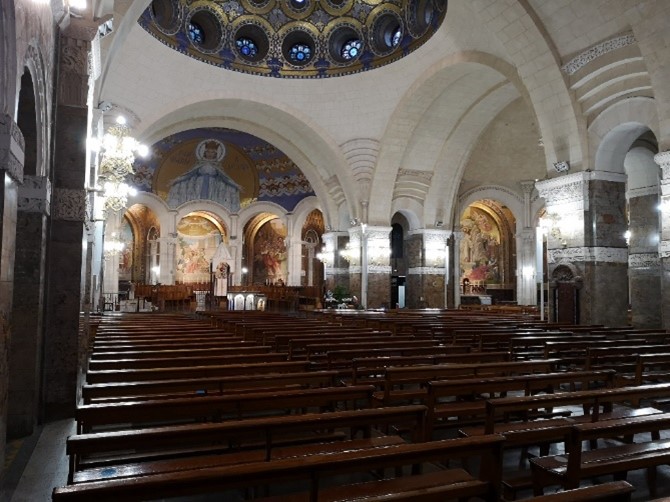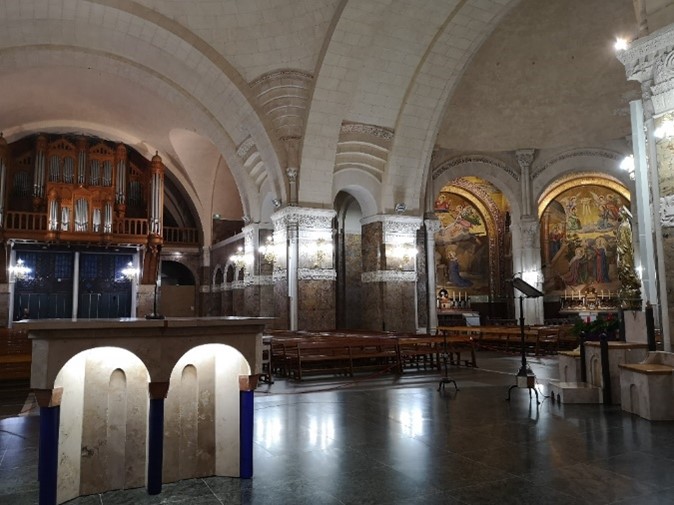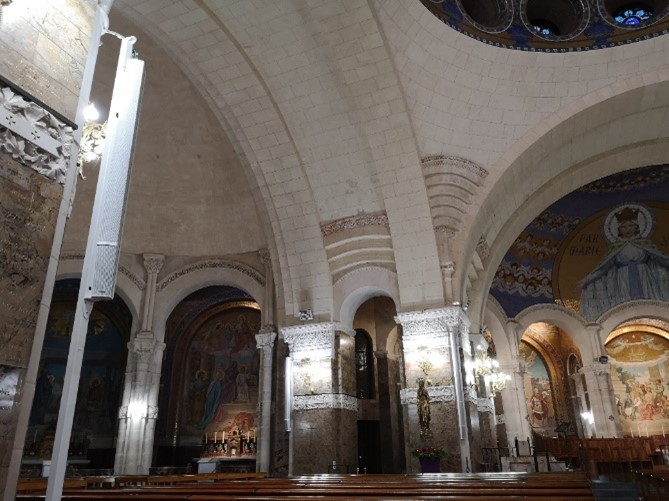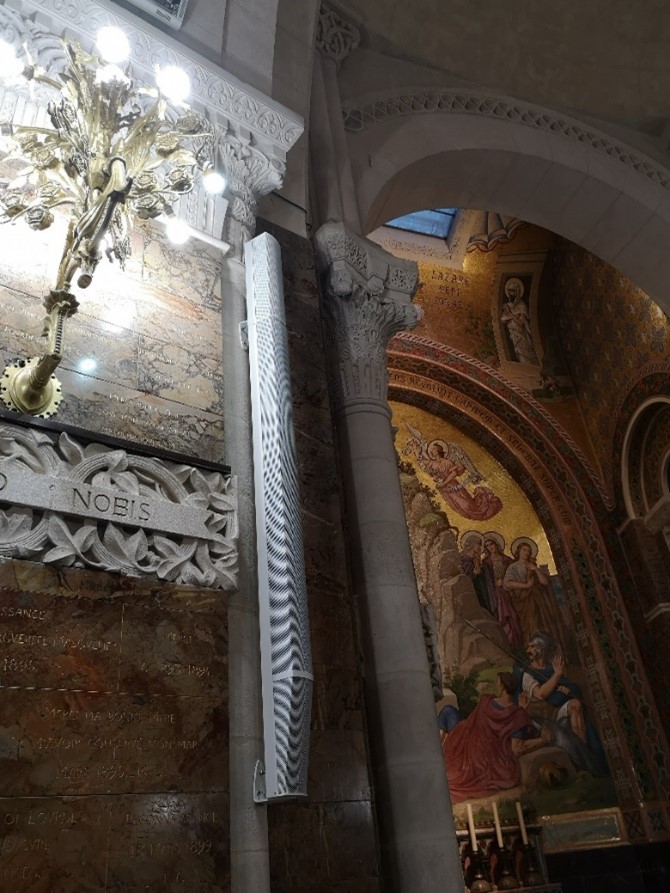CASE STUDY
Sound system for the Basilique du Rosaire (Lourdes, France)
A remarkable edifice
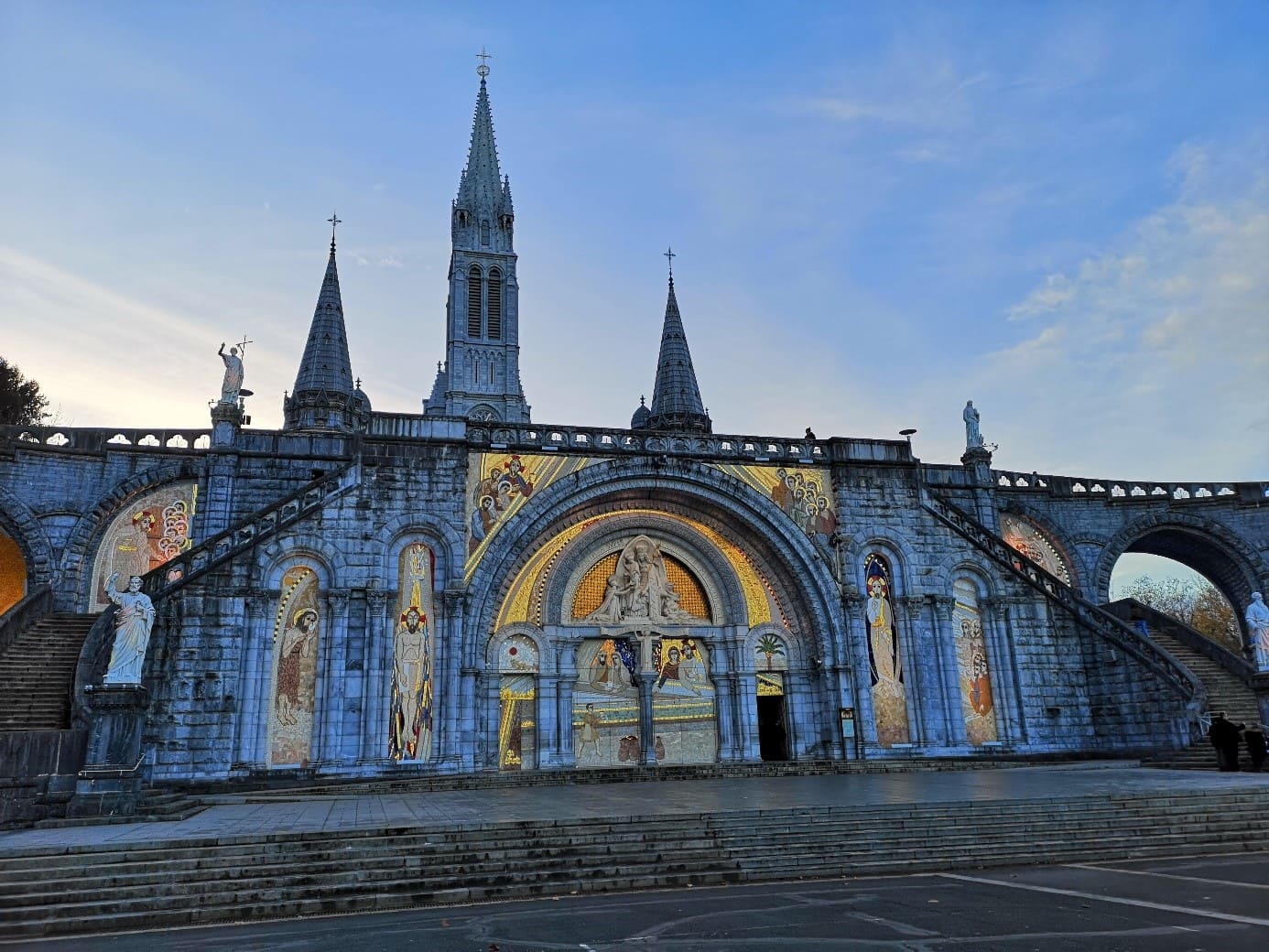
Notre Dame du Rosaire is the second basilica to be built at Lourdes, France's most important pilgrimage site. Built between 1883 and 1889, the Basilica du Rosaire is a Romanesque-Byzantine edifice capable of accommodating 1,500 worshippers on a surface area of 2,000m².
Located close to the rock, the basilica has no stained glass windows, but impressive mosaics covering over 2000m². The mosaics were created by several artists, both in the choir and in the chapels (Melchior Doze, Maxime Grellet, Louis Édouard Fournier, Felip Masó i de Falp, Edgard Maxence, Eugenio Cisterna and Joseph Wencker).
A complex project
The aim of the project is to equip the basilica with a sound system houses of worship capable of ensuring perfect intelligibility. The system integration must respect the architecture and especially the decorations and mosaics.
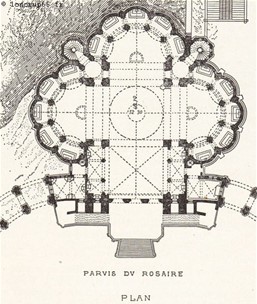
The presence of numerous decorations and the limited number of pillars in the building meant that the number of loudspeakers had to be kept to a minimum. The central dome, reaching a height of 24m, requires perfect directivity control to avoid the focusing and echo effects that impair speech intelligibility.
It should also be noticed that the rounded shape of the chapels at the ends of the transepts is a source of sound focusing. It is therefore important to limit the impact of the sound system on these spaces.
Possible locations are at the altar in front of the choir, and at the first post in the middle of the nave.
The structure of the basilica, and in particular the presence of numerous smooth surfaces occupied by mosaics, means that the reverberation time is considerable.
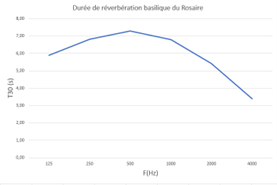
The proposed technology
The need for visual discretion, long range and directivity control led to the choice of column loudspeakers for the Rosary Basilica. The array created by the loudspeakers occupying the entire length of the loudspeaker provides perfect directivity control, while the slim, elongated design of the loudspeakers allows the product to blend discreetly into the architecture of the site.
The complexity of the venue, and in particular the presence of numerous curved surfaces, calls for precise directivity control to limit the impact of parasitic reflections. Electronic steering technology, which uses electronic processors and dedicated software to precisely adjust the range of the loudspeaker, provides a range of settings to compensate the compromises in loudspeaker positioning.
The patented ACTIVE AUDIO DGRC technology, which consists of an arrangement of the drivers in downward-tilted sections inside the loudspeaker enclosure, limits the effects of reflections on distant walls (back walls or ceiling) and thus enhances intelligibility. The combination of this acoustic technology with the electronic steering algorithms present in the StepArray range will enable precise adjustment of the loudspeaker directivity, favoring direct sound and limiting the impact of the many localized reflections potentially generated by the architecture of the venue.
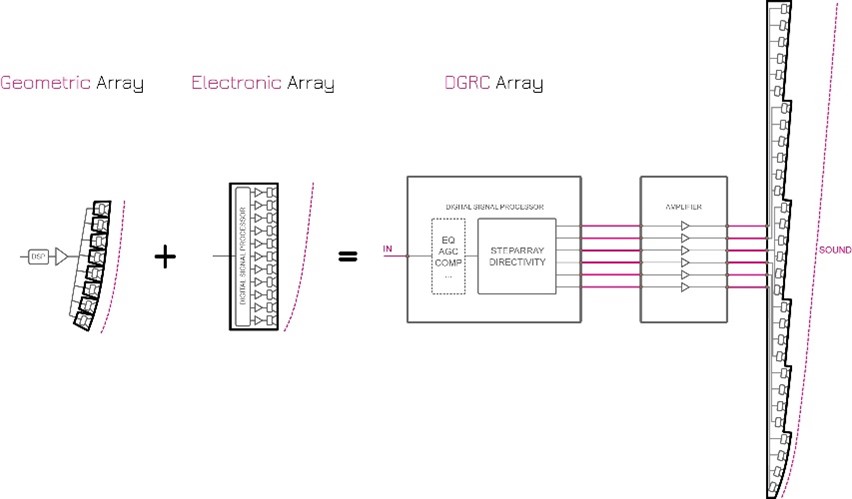
Acoustic study and products choice
The speakers are set up in 4 groups:
- 2 loudspeakers located at altar level sound the area below the dome for this zone, it is mandatory to control the vertical directivity as much as possible to avoid reflections on the dome. Columns of 2.5m hight offer sufficient directivity control while respecting the layout constraints.
- 2 loudspeakers located in the nave behind the area occupied by the dome. These speakers will cover a more favorable acoustic environment. 1.8m columns will be used, as this size will both cover the area and limit the impact of reflections on the back of the basilica.
- 2 loudspeakers for the transepts. Although the area to be sounded is shallow, 1.8 column loudspeakers will be used to provide good control and directivity, thus limiting reflections on the curved walls of the chapels.
- 4 smaller passive loudspeakers will be used to sound the choir and side aisles.
The speakers are chosen from the Active Audio StepArray range, which features both DGRC technology and electronic directivity adjustment. StepArray 180P (1.8m columns) and StepArray 250P (2.5m columns) speakers will be used.
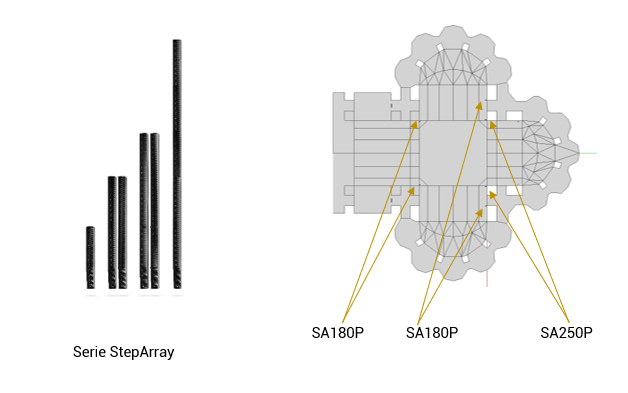
Acoustic prediction
This layout and the steering parameters to be set on the various loudspeakers are validated by modeling the sound level distribution over the different listening zones of the basilica. The search for optimum, even coverage will optimize intelligibility.
Steering on StepArray loudspeakers is adjusted via 2 parameters:
- Range, which adjusts the distance covered by the speaker.
- Balance, which adjusts the sound level between the front and rear of the listening area.
The parameters are adjusted as follows:
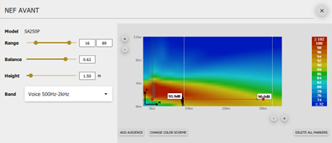
The nave of the basilica is 30m long. The settings applied provide a 6dB reduction between the sound level in the covered area and the sound level at the back of the basilica. This attenuates the impact of reflections on the back wall.
The size of the column means that the sound level at a height of 8m is almost 20dB lower than in the audience area. The impact of reflections on the dome is also attenuated.
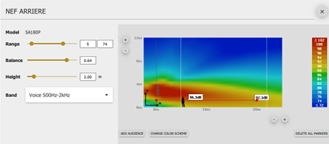
The return loudspeakers in the nave will limit the sound level produced by the main loudspeakers, further reducing the impact of distant reflections.
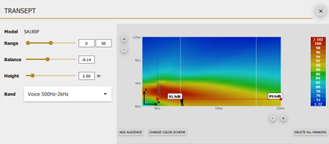
The parameters implemented for the transepts offer a 7.5dB attenuation between the sound level in the audience area and the sound level at the back of the chapels. The impact of reflections from curved walls is attenuated.
With these parameters, space coverage calculated in EASE software is show on the map below (coverage at 1000Hz).
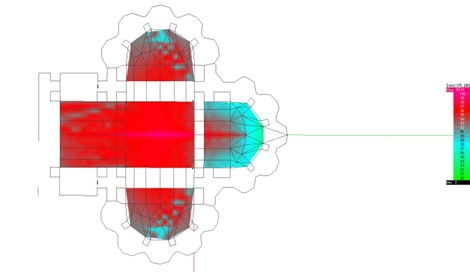
THE SET UP
The following views show how the system has been integrated into the basilica.
|
Global view |
Columns in the nave |
|
Delay line in the nave |
Delay line for the transept
|
The results
The system provides homogeneous coverage of the listening area and very good intelligibility (STI>0.5), given the very difficult acoustics of the site.

Measured SPL in the basilica

STI index values
The system provides clear, intelligible speech throughout the listening area.
